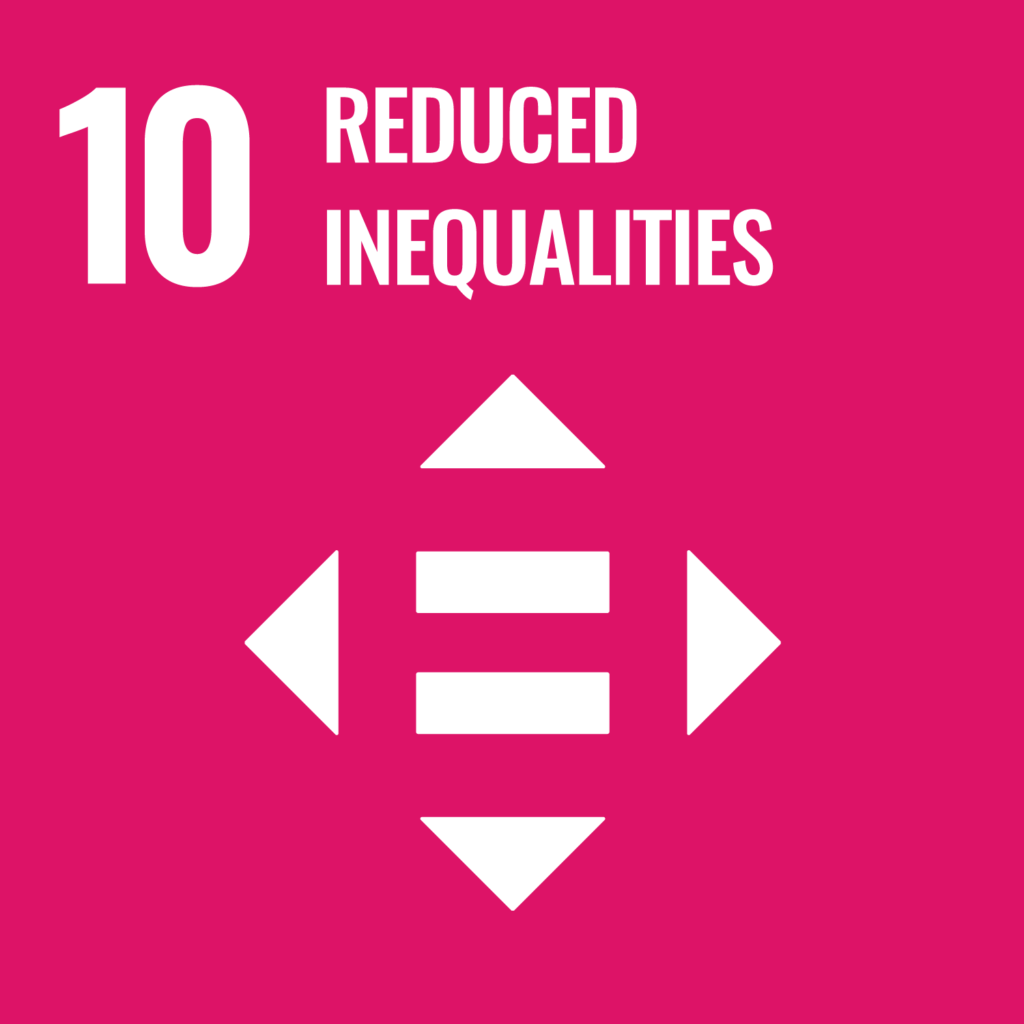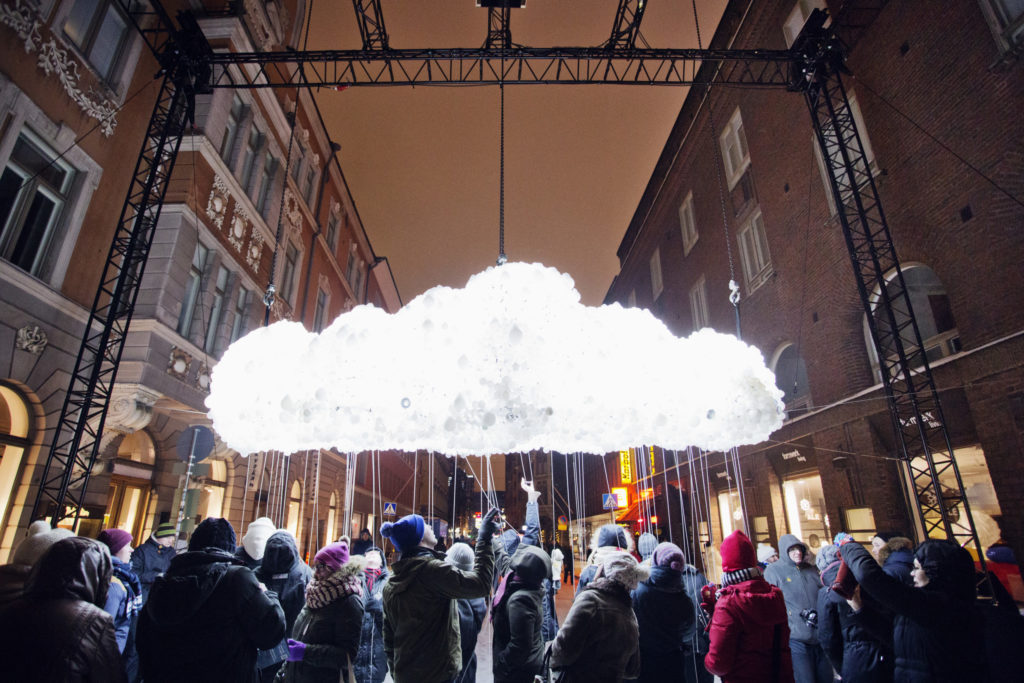
In global terms, Helsinki is at a good level in many inequality-related issues when looking at the SDG on reduced inequalities. Nevertheless, inequality and marginalisation remain among the most persistent and long-lasting problems in Helsinki, despite years of City programmes and objectives aimed at reducing them.
The number of Finns at risk of poverty or marginalisation has continued to increase after the COVID-19 pandemic. Health and wellbeing disparities between population groups have also increased, as have regional differences. Homelessness and undocumented status are bigger challenges in Helsinki than in the rest of the country, although in international comparison Helsinki has a low level of homelessness, especially primary homelessness, and Finland has so far been the only country in Europe to reduce homelessness. The challenges of homelessness in Helsinki are exacerbated by the city’s attractiveness as a big city, the high cost of housing, the large number of marginalised people and the inadequacy of temporary accommodation. Helsinki achieved its goal of halving the number of unhoused people by 2023. However, the 2025 goal of ending homelessness in Helsinki will not be achieved. The number of homeless people has decreased compared to the situation in 2019. At the end of 2023, there were 739 single unhoused people in Helsinki, of whom 26% were women, 8% were under 25 years of age and 36% had an immigrant background. There were 32 unhoused families. Homelessness among both single people and families has fallen by more than 50% since 2019. For slightly over half of the single unhoused people, the homelessness was long-term.
The number of undocumented people in Helsinki is difficult to estimate. Undocumented people are a diverse group but, in practice, an undocumented person is someone who resides in Finland without a residence permit. The everyday lives of undocumented and homeless people are marked by constant uncertainty about their future. Homeless and undocumented people are in a vulnerable position and also at high risk of other threats, such as violence and exploitation.
Segregation development
Ethnic segregation in Helsinki is also relatively low by international standards, compared to Stockholm or Copenhagen, for example. However, there has been an increase in segregation over the past 10 years. The proportion of the population of Helsinki accounted for by immigrants and their children born in Finland has increased considerably in the 21st century, while at the same time there have been major changes in the demographic structure of individual areas.
Regional differences in the socio-economic structure of the population are reflected in differences in morbidity and perceived wellbeing. This is reflected in regionally differentiated service needs. There are also significant regional and school-specific differences in the student, pupil and child structures of educational institutions, schools and daycare centres. In addition, regional differences are reflected in perceived safety. Studies have shown that the segregation development also has an impact on migration choices and on the segregation of housing prices and school learning outcomes. Migration within the city can intensify the segregation development if people who move house start making their choices based on the characteristics of the areas, favouring certain areas and avoiding others.
Helsinki’s socio-economic sum index by district

The suburban regeneration model as a corrective measure
During this strategy period, Helsinki has put a great deal of resources into the so-called suburban regeneration areas of Kannelmäki–Malminkartano, Malmi, Mellunkylä and Meri-Rastila. The suburban regeneration is being implemented through cross-administrative cooperation and aims to create new vitality in the selected target areas by investing in the regeneration of the built environment and new construction. The suburban regeneration is also a tool for achieving the City’s strategic objectives in terms of preventing segregation and increasing the vitality of the areas.
In addition to residential construction, projects to provide a safe and comfortable living environment have also been carried out in the suburban regeneration areas during the strategy period. As part of the national suburban development programme running until 2022, recreational areas and playgrounds in the suburban regeneration areas were renovated. Services in the areas are being improved through spearhead projects, such as the construction of a community centre in Meri-Rastila and a family centre and well-being centre in Malmi.
In 2023, the suburban regeneration projects implemented the Bloomberg–Harvard development programme to increase the safety of children and young people in urban environments by strengthening local leadership and local cooperation networks. The aim of the programme was to find solutions to improve the safety of children and young people through a multidisciplinary approach. The programme left the suburban regeneration areas with teams based on the local leadership model, with members from all City divisions.
Children and young people an important target group in preventing marginalisation and reducing inequalities
The inequality of children and young people is reduced by high-quality teaching and early childhood education. In addition to this, it has been ensured that children and young people can engage in diverse recreational activities during their free time. An example of this is the Finnish model for leisure activities, which Helsinki has implemented very well. Free after-school hobbies are provided at all comprehensive schools in Helsinki. The selection includes more than 30 different recreational activities that children and young people have asked for, and over 8,000 pupils in grades 3–9 choose one every week. The inclusion of the Finnish model for leisure activities in the Youth Act established it as a permanent operating model.
The model for the needs-based funding of early childhood and basic education has been updated and the amount of funding has been increased. The needs-based funding is targeted at the daycare centres and schools that need support in ensuring equal learning opportunities.
In comprehensive schools, the learning and mastery of emotional and interaction skills have been reinforced. Comprehensive schools have drawn up plans for teaching emotional and interaction skills, and the topic is regularly explored with pupils. School coaches and multilingual instructors offer pupils low-threshold support and guidance. In upper secondary education, work to increase physical activity and safety and strengthen community spirit contributes to reducing segregation and inequality across the city as a whole.
Integration plays an important role in reducing inequalities
At the end of 2023, the population of Helsinki included 134,000 people with a foreign background. Four fifths of them were themselves born abroad. People with a foreign background accounted for 20% of the population, and this proportion has been steadily increasing. People have moved to Finland for work, study or family reasons, and some have received residence permits on the basis of international protection. At the end of 2022, people with a foreign background born abroad represented 17% of the city’s working population and 33% of the city’s unemployed population. The unemployment rate of immigrants was 19%. The poor employment situation affects financial resources and thereby the wellbeing of individuals and families.
Integration is a multidimensional phenomenon and includes not only employment, but also aspects related to language and culture acquisition, the building of social relations and networks, inclusion and participation, and the development of a sense of belonging, among other things. People with foreign backgrounds in Helsinki have integrated in very different ways, with many doing well but some facing various challenges in different areas of their lives. At worst, these are also reflected in their children who have been born and raised in Finland. From the beginning of 2025 onwards, the City of Helsinki’s role in promoting the integration of immigrants will be further strengthened. The reform of immigration legislation makes parents caring for their children at home a statutory target group for integration promotion.
People with foreign background, foreign language speakers and foreign citizens in Helsinki at the end of the year 1990-2023

Successes:
- Families with children receive support at an earlier stage thanks to new operating models.
- The model for leisure activities has been developed in cooperation between divisions to ensure that every child gets a hobby.
- The needs-based funding model has had a positive impact on reducing inequalities in education, and the approach was also extended to other divisions.
- The Helsinki Skills Center provides vocational training and employment services to those who have moved to Finland.
- International House Helsinki provides a wide range of authority and advisory services for those who have moved to the Helsinki Metropolitan Area from abroad.
Areas for development:
- Much of the development work for reducing inequalities and integration is carried out in projects, making it more difficult to carry out systematic and long-term work.
- Cooperation between divisions must be further improved, and structures for preventing marginalisation must be further developed. Upper secondary education must systematically adopt the collective impact framework to promote cooperation between divisions and reduce the fragmentation of services.
- Reaching parents caring for their children and families in order to support the progress of their integration requires further development.
- The prevention of social and regional ethnic segregation and the mitigation of its negative consequences must be developed.
- The employment path of immigrants must be shortened.

